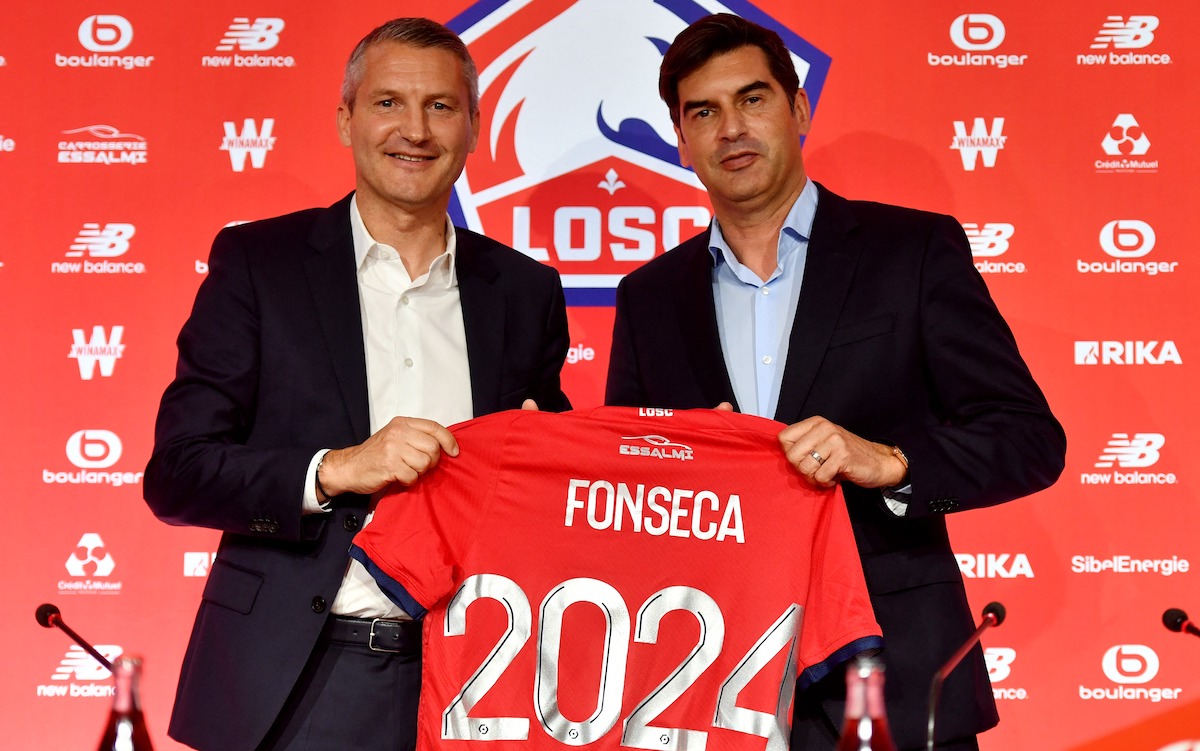Stefano Pioli’s contentious tenure at AC Milan has drawn to a close. Completing a term packed with bouquets and brickbats, Pioli will leave the club with his head held high and Milan’s 19th Scudetto tattooed on his arm.
The days leading to his departure strangely resembled his arrival; loud, cantankerous voices from the stands and on social media demanding his exit. #PioliOut trended when he signed for the club and echoes as he signs off as well.
The vehement opposition towards prospective coaches isn’t limited to the time Pioli was brought on board. This sentiment reverberated when Julen Lopetegui was touted as the hot favourite and remains resilient with another Portuguese manager expected to take the reigns at Milan. His name is Paulo Fonseca.
The en masse objection arises from the optics of the appointment – Fonseca isn’t perceived to be an upgrade on Pioli. A cursory glance at the stats establishes that perception. Pioli’s win percentage at Milan hovers around 55%. Fonseca’s record at Lille (50%) and Roma (52%) is comparable but needs to be contextualised.
Pioli has been at Milan for five years, during which the squad has transitioned from an upper-mid-table team to league champions. Fonseca’s Roma and Lille were objectively weaker with comparably lower expectations.
Fonseca took over at Lille in 2022-23 following a horrific season for the French club. The team had finished 10th merely a season after they had won the league title. Nine of the thirteen most-used players from the title-winning side were no longer at the club.
Fonseca was tasked with developing talent as the management raked in big bucks from sales and spent a paltry portion on purchases. He led Lille to a 5th placed finish last season and improved upon that, finishing 4th in Ligue 1 this year.
In addition to his achievements with Lille, the suits at Milan possibly admire Fonseca for his likeness to their picture of an ideal coach. He works with what is available to him and is compatible with driving a youth-oriented project. His stint at Lille holds the blueprint for Milan’s mandate.
Aesthetically, Fonseca’s teams play a high line, build from the back and dominate possession. He prefers to employ a 4-2-3-1 shape but has demonstrated the ability to adapt to a 3-4-3 and 4-3-3. Bringing him in would not require a reset in the squad, nor is he likely to throw the toys out of the pram if he isn’t given a shiny new one.
Through the dismissal of Paolo Maldini at the start of the season, Gerry Cardinale sent a clear message to the folks at Milan – comply or leave.
In that sense, Pioli is the very definition of a yes-man. He would’ve continued in the job if not for a slew of embarrassing results, including the sixth derby defeat in a row and the meek loss to Roma in the UEFA Europa League. The team’s performance in the last few weeks made Pioli’s stay at the club untenable, despite him leading Milan to a second-place finish in Serie A.
Fonseca, in many ways, is an extension of what Pioli represents. He will build on Pioli’s work, retaining Milan’s competitiveness without clamouring for RedBird to break the bank. He also mirrors Pioli’s results in Europe. Apart from a run to the semi-finals with Roma in 2020-21, Fonseca has little to boast of in the illustrious continental competitions.
His five-year hiatus from the UEFA Champions League raises a legitimate concern. During his previous participation in Europe’s top-tier competition, he guided Shakhtar past the group stage only once, being eliminated on two other occasions.
His mettle remains unproven in Europe, which surprisingly doesn’t seem to impact Milan’s decision to give him the keys to the squad, one which is, by the President’s admission, built to play European football.

Another chapter from his coaching timeline is somewhat unsettling. A ghost from his past hauntingly looms over his return to Italy. AS Roma is not bereft of internal turmoil, however, over the two seasons he spent at the club, Fonseca was provided significant resources to actualise the management’s ambitions.
The club spent nearly €200m on transfers building a squad with the third-highest wage bill in the league. Mismanagement stemmed from the top, but also materialised on the pitch, with Roma finishing 5th and 7th during those seasons.
Fonseca’s goal will be to overcome that setback and embark on a fresh journey with Milan. He brought Braga their first cup in fifty years, a feat worthy of accolade. He will have to draw from that victorious spirit to break out of Pioli’s shadow at Milan.
By overlooking superstar managers like Thomas Tuchel and Antonio Conte, along with hipster favourites such as Thiago Motta and Roberto De Zerbi, the decision-makers at Milan are deliberately opting for Fonseca, a name that fails to infuse giddy excitement among the fans. He’ll step into the role amidst considerable scepticism, tasked with shifting the prevailing mood.
Given his previous struggles in high-pressure environments, the odds seem stacked against him to usher Milan into the next phase of growth and success. Declining a move to the Orange Vélodrome in favour of San Siro, Fonseca has traded one cauldron for another. Pens and keyboards await the start of his spell at Milan.







